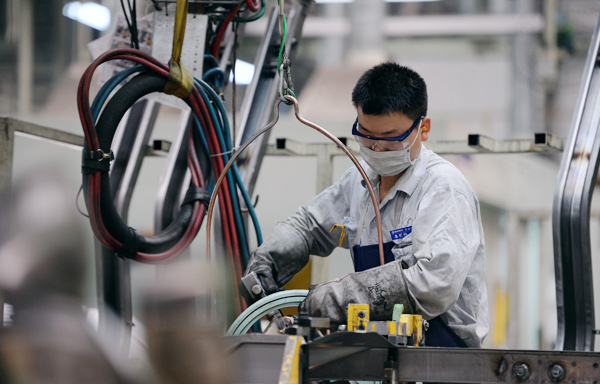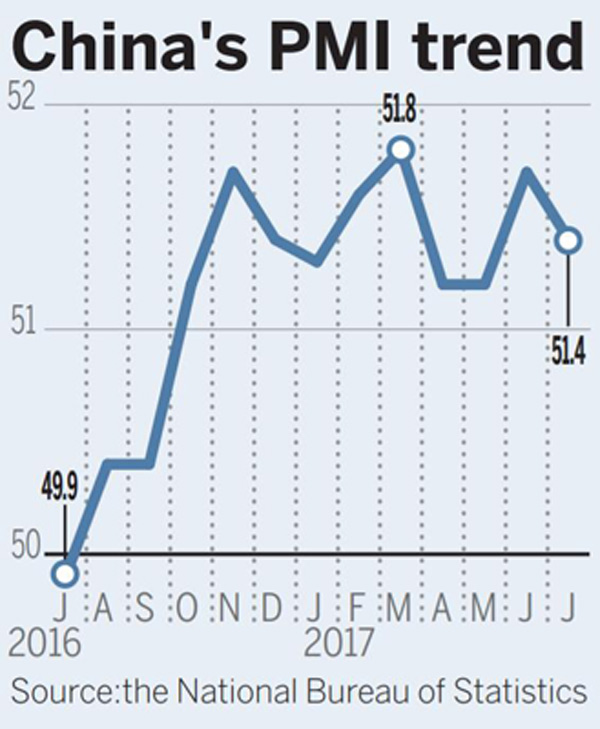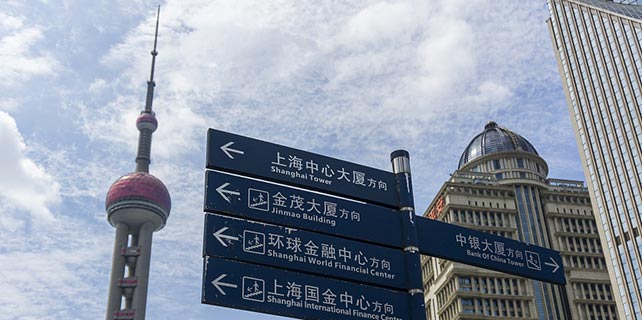Stable growth remains the way ahead
 |
|
A worker performs a soldering job at an auto manufacturing plant in Xi'an, capital of Shaanxi province. XINHUA |
Trend positive despite moderate weakening in manufacturing sector
China's manufacturing sector activity, measured by a major official index, weakened moderately in July, but economists said the trend of stable growth in the world's second-largest economy will remain.
The Purchasing Managers' Index, released on Monday by the National Bureau of Statistics, came in at 51.4 for July, down from 51.7 in June, but it remained well above the 50-point mark that separates growth from contraction.
Zhao Qinghe, a senior official at the NBS, attributed the fall in the index to recent extreme weather in many parts of the country, which disrupted normal industrial activities, and seasonal equipment repairs.
"Although the index fell by 0.3 percentage points compared with the previous month, it is roughly at the same level as the average of the indexes in the first six months," he said in a statement published on the bureau's website. "It has remained above 51 since the start of this year, (indicating that) the overall trend is stable."
The fall in the index in July does not necessarily reflect a weakening growth trend, said a CITIC Securities research report. "We remain upbeat about China's stable growth in the second half."
The sub-index for the construction sector rose to 62.5 in July from 61.4 in June, according to the breakdown of the July PMI.
That for production activity expectation rose to 59.1, up from 58.7 in June. It had risen for three consecutive months, "indicating that enterprises were more confident in their future development", according to Zhao from the NBS.
But new factory orders dropped to 52.8 from 53.1 in June, and export orders fell to 50.9 from 52.0.
"The breakdown suggests weaker foreign demand is partly to blame-the new export orders fell by a larger margin than overall new orders," Julian Evans-Pritchard, a Singapore-based China economist at Capital Economics, was quoted by Reuters as saying.
China posted stronger than expected year-on-year GDP growth of 6.9 percent in the first half of this year, fueled by rising infrastructure investment, improving exports and robust retail sales. But it is feared that growth may weaken in the second half due to the cooling of real estate investment as a result of tightened regulation.
"July's PMI signals a slight softening of the manufacturing sector," Raymond Yeung, the Hong Kong-based chief economist at Australia & New Zealand Banking Group Ltd, told Bloomberg. "External demand will likely drop in the summer and third quarter GDP growth isn't expected to hit 6.9 percent. But we aren't worried about the decline today."
As the global demand rises and commodity prices are expected to continue to rise moderately in the second half, China will not face much growth pressure in the coming months, said the CITIC Securities report.










